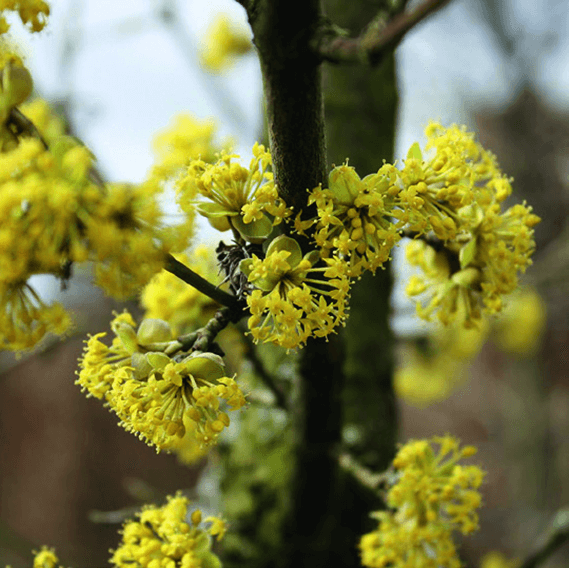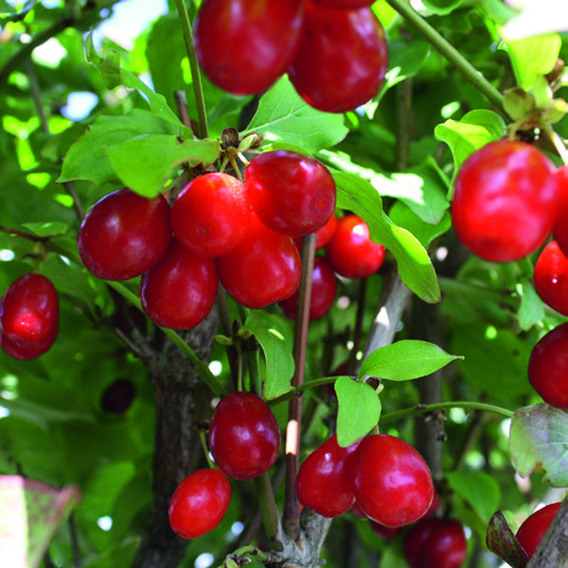Growing Guide for Cornelian Cherry (Dogwood)
Cornelian cherry is a popular species of dogwood family. It is also referred to as a cornelian cherry dogwood. Cornelian cherry is notable for its showy bright yellow flowers. Makes an attractive hedge in the spring. The hedge developes fleshy dark red cherries in the mid summer. After flowering, it produces edible fruits in summer. The fruits are high in vitamin C.

Features-
How to Grow Cornelian Cherry-

The Way to Grow

Features-
- Deciduous in nature
- The hedge can be easily shaped into desired shape
- Can be grown as a low branching flowering hedge
- Tolerant to wide range of soil.
- The growth habit is somewhere between shrub and a tree.
- Works well in small groupings.
How to Grow Cornelian Cherry-

- Select a site in full sun in a place with well-drained soil. Cornelian cherry blossom a broad variety of land types, such as clay, and a vast selection of pHs. Plants may also tolerate some shade. They might be increased as small trees or trees, or as a hedge. Make sure you plant within 50 ft of one another.
- Space plants 10 feet apart, closer if you're developing them as a hedge.
- Plant dormant bare root crops in spring once the soil might be worked.
- The planting hole ought to be big enough to hold all of the roots without bending or bending up. Dig holes 18 inches deep and broad. Split hard pan soil layers should present. Don't include uncooked fertilizers or manure into the soil mix. Over feeding may kill plants.
- Place the plant in the planting hole that origins lie obviously. Fill in the dirt in layers and then tamp down around the roots to be certain that there is good soil to root contact and also to eliminate air pockets.
- Water instantly to saturate all of dirt and roots from the pit. Leaves should appear 6-8 weeks following planting when the weather has heated.
The Way to Grow
- When rain isn't sufficient, water recently transplanted plants intensely at least once every week throughout the initial growing season. Employ 3-4 gallons of water every plant. Hoe a little ridge of soil around each tree to keep water from running away.
- A nitrogen fertilizer ought to be applied to freshly transplanted fruit trees 3-4 weeks following planting.
- Don't cultivate the soil surface inside the field of the planting hole.
- Mulch 2-3 inches deep, extending 3-4 feet round the bottom of the shrub, with cultured leaves or other organic matter.
- When growing as a shrub, utilize tree guards, pliers, bark or fencing bags to reduce damage from rabbits, rodents, deer and other wildlife.
- Monitor for diseases and pests. Check with your regional Cooperative Extension Service for pest control controls recommended for your region.
- Cornelian cherry dogwood can grow as a shrub, multi-stemmed tree or hedge, depending on how it's pruned. Prune if the plant doesn't have foliage so that you can see the construction of the plant.
Comments
Post a Comment